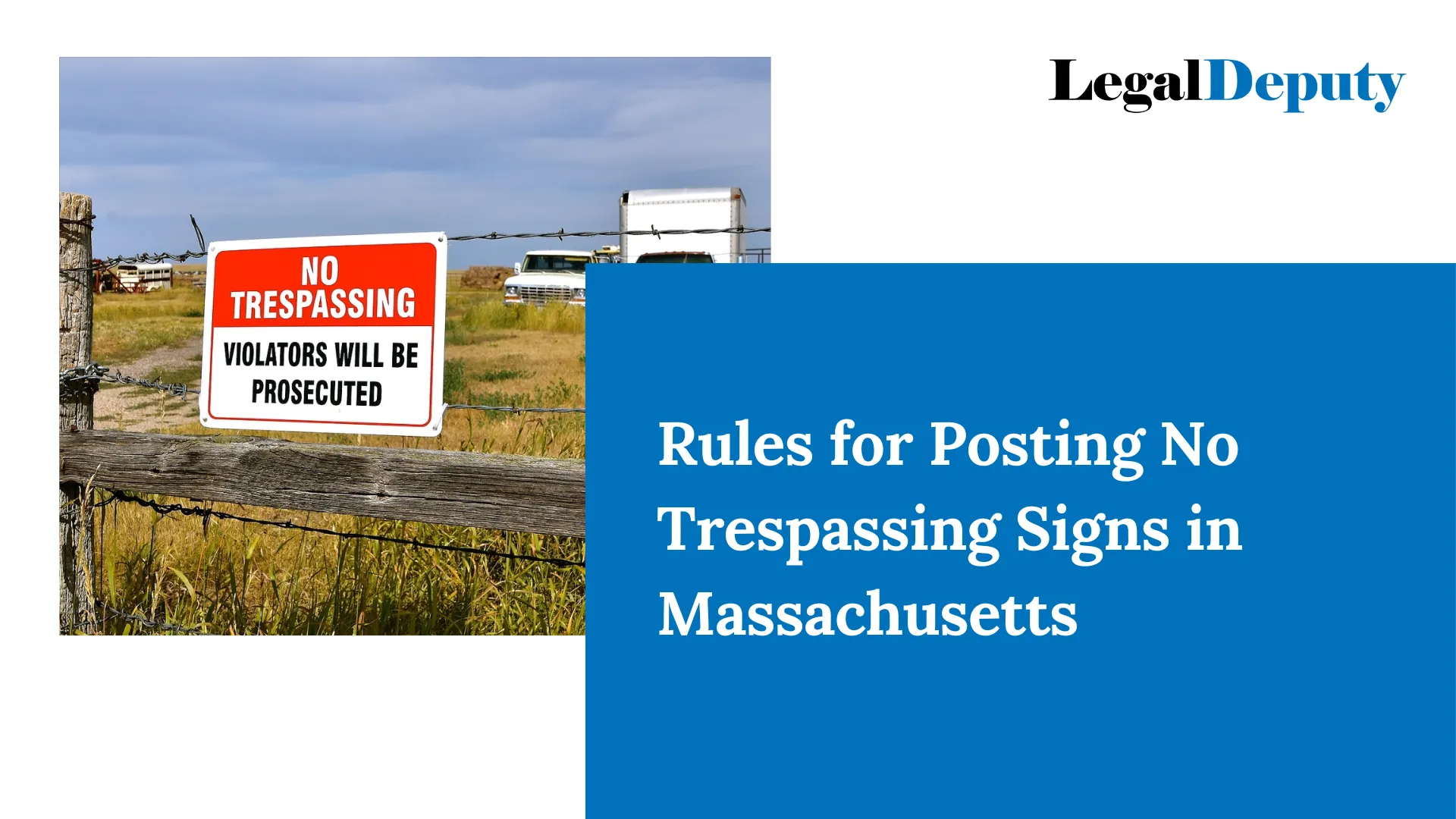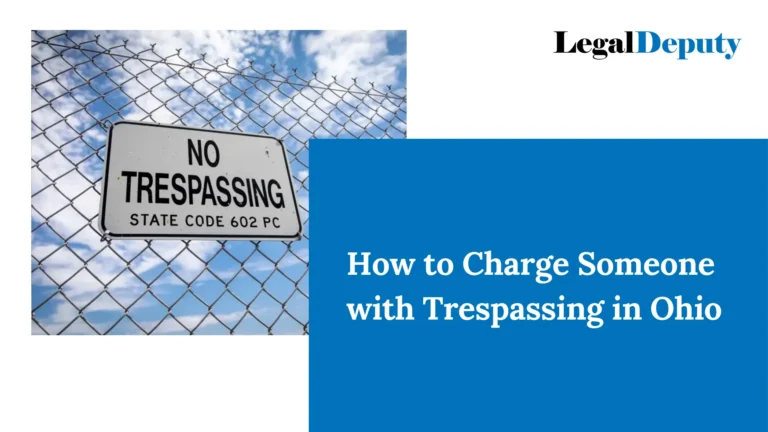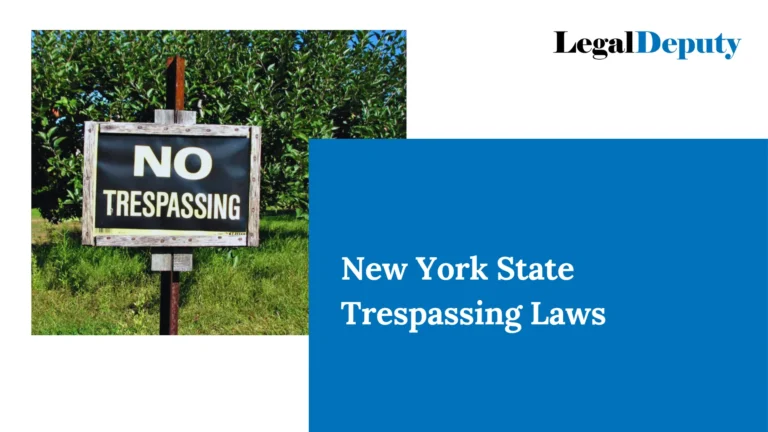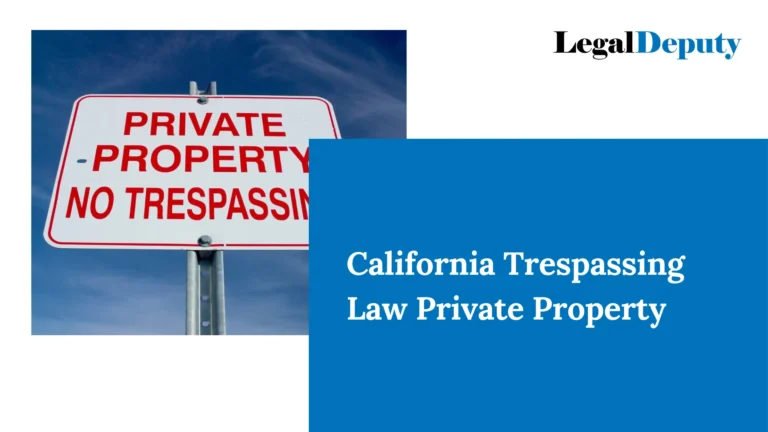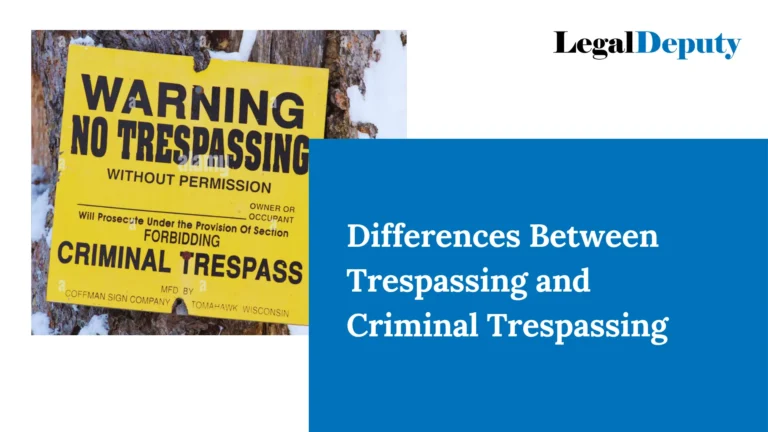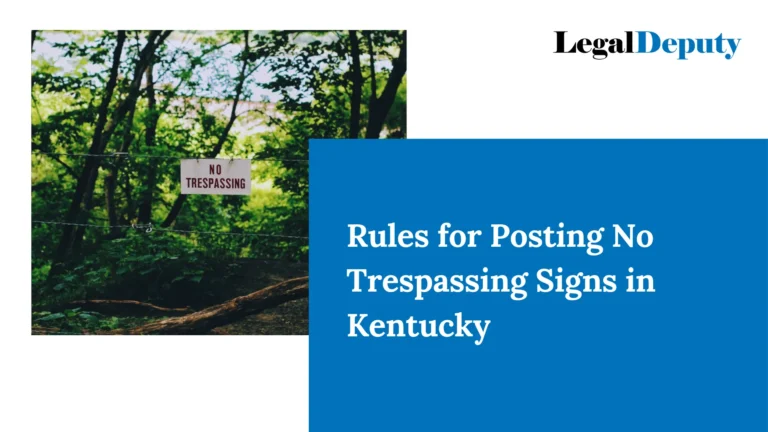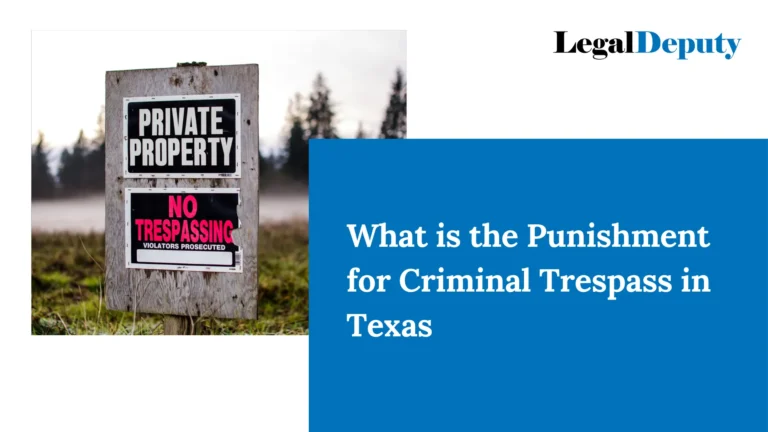Rules for Posting No Trespassing Signs in Massachusetts
Embarking on the journey of safeguarding your property involves more than just placing a few signs; it’s about navigating the intricate landscape of Massachusetts trespassing laws. Imagine these signs as legal sentinels, silently communicating the boundaries of your sanctuary. In this guide, we delve into the art of fortifying your property with No Trespassing signs—from legal intricacies to strategic placements.
Understanding this process isn’t just about compliance; it’s about empowering your property to speak its own language of protection. Join us on a journey where each sign becomes a guardian and every boundary holds a story of legal resilience.
Understanding Massachusetts Trespassing Laws: Navigating the Legal Landscape
In the picturesque expanse of Massachusetts, where property boundaries intertwine with historical landscapes, comprehending the nuances of trespassing laws becomes paramount. The legal framework in the Bay State outlines clear repercussions for those who cross the threshold without permission. Trespassing is not merely a matter of inconvenience; it’s a breach that carries legal consequences. Whether you’re a homeowner, a business owner, or a steward of public spaces, understanding the legal dimensions of trespassing is the first step towards securing your domain.
Massachusetts statutes define trespassing as the unauthorized entry onto another person’s property. The severity of penalties varies based on the circumstances, emphasizing the need for property owners to proactively establish their rights through proper signage. To navigate this legal landscape effectively, it’s crucial to delve into the specifics of Massachusetts trespassing laws and recognize the significance of No Trespassing signs as instrumental tools in delineating private boundaries. In this section, we’ll unravel the legal intricacies, providing you with the knowledge to fortify your property against unauthorized access and potential legal complications.

Requirements for No Trespassing Signs: Crafting Your Legal Shield
In the realm of Massachusetts trespassing laws, No Trespassing signs aren’t mere markers; they are your legal sentinels, wielding the power to protect your property rights. To harness this power effectively, it’s crucial to understand the specific requirements that transform a sign from a simple warning into a legally binding declaration. Massachusetts, with its rich history and diverse landscapes, has established guidelines dictating the size, color, and verbiage of these protective beacons.
Size Matters: According to state regulations, the size of your No Trespassing sign is not a mere aesthetic consideration; it’s a legal necessity. Ensure that your signs are of sufficient size to be easily noticeable. This not only enhances their deterrent effect but also meets the legal criteria for effective communication.
Colors that Command Attention: Selecting the right color for your No Trespassing signs is akin to choosing a language that resonates with legality. Opt for bold, contrasting colors that grab attention and convey a sense of authority. Think of these colors as the visual vocabulary of your property’s rules—making a statement that can’t be ignored.
Verbiage with Legal Precision: The words on your No Trespassing sign carry the weight of the law. Massachusetts requires specific language to be included for legal effectiveness. Crafting a concise yet comprehensive message is not only a legal obligation but also an opportunity to communicate your intent clearly.
Understanding these specifications is not just about compliance; it’s about empowering your signs to stand as unwavering guardians of your property rights.
Choosing the Right Location: Where Guardians Stand Tall
Imagine your No Trespassing signs as guardians, strategically positioned to watch over your property. The effectiveness of these sentinels lies not just in their message but also in their placement. Massachusetts, with its diverse landscapes and unique properties, demands a thoughtful approach when deciding where to station these protective markers.
Visibility is Key: To unleash the full potential of your No Trespassing signs, visibility is non-negotiable. Consider the natural flow of foot traffic and potential points of entry. Whether nestled in the foliage or standing sentinel at the entrance, the key is to ensure that these signs are impossible to overlook. Remember, a well-placed sign not only deters potential trespassers but also communicates your commitment to enforcing property boundaries.
Boundary Wisdom: Property boundaries are the canvas on which your guardians paint the rules. Placing signs near these boundaries, especially at key access points, sends a clear message about the limits of permissible entry. Be strategic in identifying areas where trespassing is more likely to occur, and let your signs serve as both a warning and a legal barrier.
Consider the Landscape: Massachusetts boasts a diverse terrain—from bustling urban landscapes to serene rural expanses. Tailor the placement of your No Trespassing signs to harmonize with the surroundings. Whether against the backdrop of a historic building or subtly integrated into a natural setting, the goal is to seamlessly blend protection with the aesthetic of your property.
In this section, we have explored the art of selecting the right locations for your guardians, ensuring they not only uphold the legal standards but also stand tall in the face of potential trespassers. By strategically placing these sentinels, you transform your property into a fortress of legal protection, reinforcing your commitment to maintaining the sanctity of your domain.
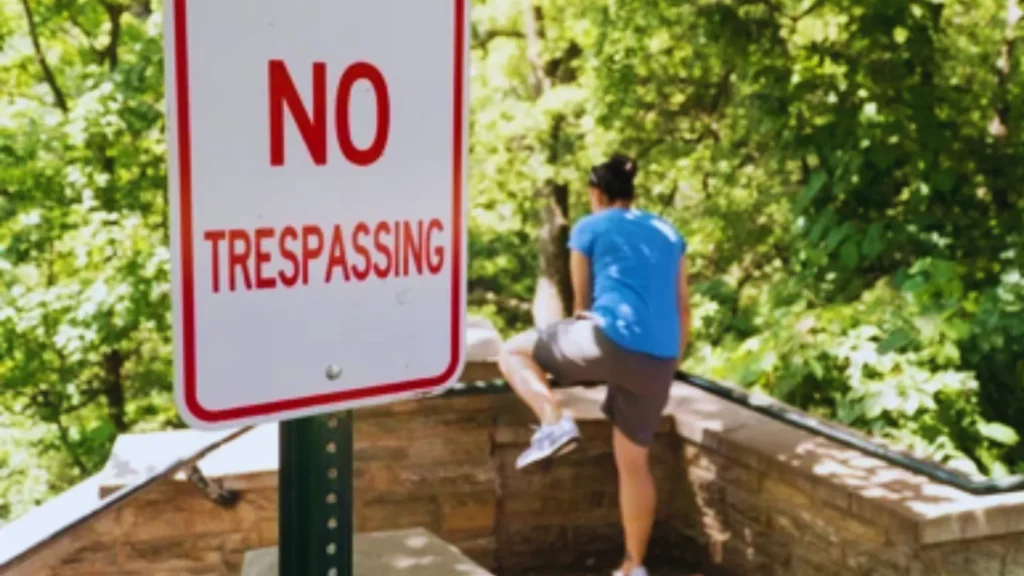
Maintaining No Trespassing Signs: Sustaining the Vigilance
Like guardians standing sentinel, No Trespassing signs require more than just an initial proclamation; they demand ongoing care and attention to fulfill their protective role. In the dynamic landscape of Massachusetts, where weather patterns shift and time weaves its effects, the maintenance of these sentinels becomes a crucial aspect of upholding your property rights.
Regular Inspections: Think of your No Trespassing signs as silent protectors that need periodic check-ups. Regular inspections ensure that they remain visible, intact, and capable of delivering their message with unwavering clarity. Weather elements, vandalism, or simple wear and tear can compromise the effectiveness of your signs, making routine inspections a preemptive measure against potential breaches.
Timely Replacements: Signs that have weathered the seasons may lose their vibrancy and impact. Faded colors and illegible text diminish their deterrent effect and legal standing. Timely replacements not only restore the visual strength of your guardians but also demonstrate your commitment to maintaining a secure environment. Consider it a renewal of vows with your property, signaling your dedication to its protection.
Adapting to Changes: Your property may evolve over time—new structures may emerge, or landscaping may alter the visual landscape. It’s crucial to adapt your No Trespassing sign placement accordingly. Ensure that these markers continue to align with the dynamics of your property, standing as steadfast guardians that evolve with the changing seasons of life.
By understanding the importance of ongoing care, you not only preserve the legal strength of your property defenses but also showcase a commitment to upholding the boundaries that define your domain.
Legal Consequences of Inadequate Signage: Navigating the Waters of Liability
In the intricate dance of property ownership, the absence or inadequacy of No Trespassing signs isn’t a mere oversight—it’s a potential gateway to legal complications. Massachusetts, with its rich history and diverse landscapes, emphasizes the role of these signs as more than just warnings; they are legal barriers that delineate your property boundaries. Understanding the legal consequences of inadequate signage is akin to charting a course through the waters of liability.
Voided Protections: In the eyes of Massachusetts law, No Trespassing signs aren’t just suggestions; they’re a crucial component of property defense. Inadequate signage, whether due to improper wording, placement, or lack of visibility, can void the legal protections these signs are intended to provide. Trespassers may argue ignorance, and without clear, compliant signage, the legal grounds for prosecution become murkier.
Heightened Property Owner Liability: Without the safeguard of properly displayed No Trespassing signs, property owners may find themselves facing heightened liability. In the absence of a clear demarcation of private property, legal disputes can arise, placing the burden on the property owner to prove their case. Adequate signage not only deters trespassers but also serves as a tangible defense against potential legal complications.
Legal Precedents and Case Studies: Delving into legal precedents and case studies, we’ll explore instances where inadequate signage played a pivotal role in legal outcomes. By understanding real-world scenarios, you gain valuable insights into the potential pitfalls of insufficient property markings and the legal ramifications that can unfold.
By comprehending the potential consequences, you not only fortify your property against legal challenges but also underscore the critical role that No Trespassing signs play in safeguarding your domain.
Tips for Communicating Intent: Crafting a Dialogue with Your Signs
Your No Trespassing signs are not just legal declarations; they are conversations between you and those who approach your property. Crafting this dialogue with precision ensures that your intent is not only legally sound but also clearly understood. In the diverse landscapes of Massachusetts, where communication takes many forms, consider these tips as your guide to fostering a dialogue that transcends boundaries.
Supplement with Additional Signage: While No Trespassing signs serve as the primary guardians of your property, consider supplementing them with additional signage that communicates specific warnings or conditions. Whether it’s indicating restricted areas, providing contact information, or outlining specific rules, these supplementary signs enhance the clarity of your message.
Balancing Clarity with Conciseness: Precision in language is the cornerstone of effective communication. Craft your No Trespassing signs with a balance of clarity and conciseness. Avoid ambiguity, and choose words that resonate with authority. The goal is to communicate your intent without leaving room for interpretation, ensuring that those who approach your property understand the boundaries without confusion.
Incorporate Visual Elements: Human brains are wired to respond to visual stimuli. Incorporating symbols, icons, or graphics alongside textual messages can enhance the communicative impact of your signs. A well-designed sign not only grabs attention but also conveys your message in a format that transcends language barriers.
Regularly Update Information: Just as language evolves, so too should your signs. If there are changes in property rules, contact information, or specific warnings, make sure to update your signage accordingly. Stale or outdated information can lead to misunderstandings and dilute the effectiveness of your communication.
By humanizing your communication strategy, you not only enhance the legal effectiveness of your signs but also foster a clear understanding of the rules that govern your domain.
Conclusion
As we conclude our exploration into the realm of No Trespassing signs in Massachusetts, remember that these seemingly humble markers are your property’s silent guardians. Beyond their legal significance, they represent a commitment to maintaining the sanctity of your space. Upholding Massachusetts trespassing laws requires more than compliance; it demands a proactive stance in crafting a secure environment.
By understanding the requirements, choosing strategic locations, and maintaining vigilant signage, you establish a fortress of legal protection. Inadequate signage can lead to legal quagmires, emphasizing the pivotal role these markers play. Communicate your intent with clarity, supplementing signs where necessary, and adapt to the evolving landscape of your property.
In this dynamic dance between law and property, your No Trespassing signs become the choreographers, setting the boundaries for a harmonious coexistence. Stay informed, stay vigilant, and let your signs not only deter trespassers but also serve as ambassadors of your unwavering commitment to safeguarding your sanctuary. Your property deserves nothing less than the best defense, and with the right signs in place, you fortify not just boundaries but a sense of security that echoes through every inch of your domain.
Disclaimer
The information provided on this blog is intended for general informational purposes only and does not constitute legal advice. While we strive to ensure the accuracy and currency of the content, laws and regulations are subject to change, and individual circumstances may vary.
Reading or accessing the information on this blog does not establish an attorney-client relationship. If you require legal advice tailored to your specific situation, please consult with a qualified attorney. Reliance on the information presented here is at your own risk, and we disclaim any liability for actions taken based on the content of this blog.
We encourage you to seek professional legal counsel for any legal issues you may encounter. Remember that legal intricacies are nuanced, and the guidance provided here may not encompass all possible scenarios. Our aim is to inform and educate, but it’s crucial to consult a legal professional for advice tailored to your unique circumstances.

